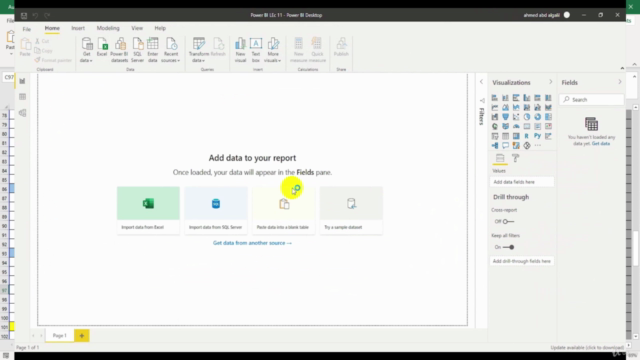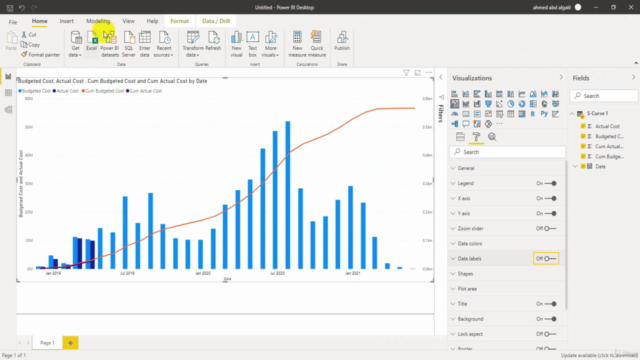Microsoft Power BI For Professionals

Why take this course?
Based on the topics you've listed, it seems you're looking for a comprehensive guide on various aspects of working with Power BI, including data transformation with Power Query, visualization creation, interaction elements like cards and filters, advanced chart types, integrating with project management software like Primavera P6, and more. Here's a structured approach to learning these topics:
-
Understanding the Basics of Power BI:
- Familiarize yourself with the Power BI interface, including the Report View, Data View, and Model View.
- Learn how to import data from various sources like Excel, SQL databases, cloud services, etc.
-
Data Transformation with Power Query:
- Begin with basic operations like filtering, removing rows/columns, and changing data types.
- Move on to more complex transformations such as appending files and tables, merging data from different sources, and using conditional columns.
- Explore date functions, text manipulation, and numerical operations.
- Understand how to handle errors and replace values within your queries.
-
Visualization:
- Get hands-on experience with various visualization types, including charts, graphs, and advanced visuals.
- Experiment with formatting and customizing visuals to best represent your data.
-
Interactive Elements in Reports:
- Learn how to use cards and gauges to display key metrics.
- Implement filters to allow users to interact with the data dynamically.
-
Advanced Chart Types:
- Dive into advanced visualizations like scatter plots, treemaps, and waterfall charts.
- Understand how to use DAX (Data Analysis Expressions) for sophisticated calculations.
-
Working with Date and Time:
- Master functions for extracting components of dates and working with time periods.
- Calculate differences between dates and understand the nuances of date-related functions.
-
Integration with Primavera P6:
- Understand how to link Primavera P6 data to Power BI for reporting and analysis purposes.
- Create reports using P6 data, visualizing project timelines, progress, and other key metrics.
-
Sharing and Collaboration:
- Learn best practices for sharing reports within your organization.
- Set up workspaces and manage permissions for users to view or edit reports.
-
Performance Tuning:
- Optimize data model performance by understanding how to use relationships effectively.
- Analyze and improve query performance in Power Query.
-
Deployment:
- Explore deployment options for your Power BI reports, including embedding in applications or publishing to the Power BI service.
-
Security and Compliance:
- Ensure that your reports comply with data governance and security standards within your organization.
To master these topics, you can follow online courses, tutorials, and documentation provided by Microsoft for Power BI. Additionally, community forums, blogs, and YouTube channels can offer valuable insights and examples. Remember to practice each concept with real-world data to solidify your understanding.
Course Gallery




Loading charts...